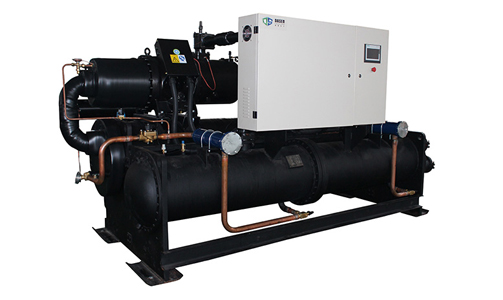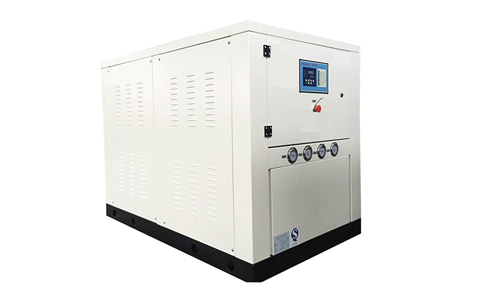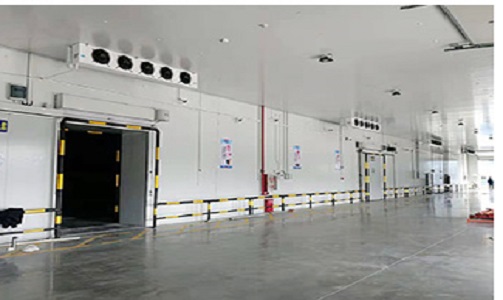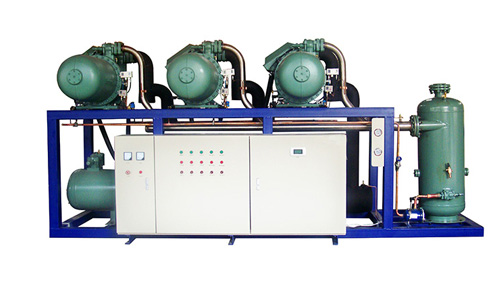Chiller systems play a crucial role in various industries, providing efficient cooling for processes, equipment, and buildings. Understanding the fundamentals of chiller systems is essential for optimizing performance, energy efficiency, and overall reliability. In this ultimate guide, we will explore the key components, types of chillers, operation principles, maintenance tips, and energy-saving strategies associated with chiller systems.
Chiller System Components:
Chiller systems consist of several essential components, including:
Compressor: Responsible for compressing the refrigerant gas and raising its pressure.
Condenser: Facilitates the transfer of heat from the refrigerant to the cooling medium, typically air or water.
Evaporator: Converts the liquid refrigerant into a gas, absorbing heat from the process or space being cooled.
Expansion Valve: Regulates the flow and pressure of the refrigerant, facilitating its phase change from high pressure to low pressure.
Refrigerant: The working fluid that absorbs and releases heat during the cooling cycle.

Water-Cooled Screw Chiller
Types of Chillers:
Chillers can be categorized into various types based on their cooling mechanisms:
Air-Cooled Chillers: These chillers use ambient air to cool the condenser, making them suitable for smaller applications and spaces with limited water availability.
Water-Cooled Chillers: Water-cooled chillers employ cooling towers or other water sources to dissipate heat from the condenser. They offer higher efficiency but require a dedicated water supply.
Absorption Chillers: These chillers use a heat source (e.g., natural gas or waste heat) to drive the refrigeration cycle instead of a mechanical compressor. They are ideal for applications with waste heat recovery options.
Centrifugal Chillers: These high-capacity chillers utilize centrifugal force to compress the refrigerant gas, making them suitable for large-scale cooling applications.

Box Type Water-cooled Chiller
Chiller System Operation:
Chiller systems follow a consistent operating principle:
The refrigerant, in a low-pressure liquid state, enters the evaporator and absorbs heat from the process or space being cooled, evaporating into a low-pressure gas.
The compressor raises the pressure of the refrigerant gas, increasing its temperature.
The hot refrigerant gas then flows into the condenser, where it releases heat to the cooling medium (air or water), causing the refrigerant to condense into a high-pressure liquid.
The high-pressure liquid refrigerant passes through the expansion valve, which reduces its pressure and temperature, preparing it for the next cycle.
Chiller System Maintenance:
Regular maintenance is crucial for the optimal performance and longevity of chiller systems. Some essential maintenance tasks include:
Regular cleaning of condenser and evaporator coils to ensure efficient heat transfer.
Checking and adjusting refrigerant levels to prevent performance issues.
Lubricating moving parts to minimize friction and wear.
Inspecting electrical connections and controls for any faults or abnormalities.
Regularly monitoring and cleaning air filters to maintain proper airflow.
Energy-Saving Strategies:
To enhance energy efficiency and reduce operational costs, consider the following strategies:
Implementing variable speed drives (VSD) on chillers and pumps to match the load requirements.
Optimal sequencing and staging of chillers to avoid unnecessary operation.
Installing energy recovery systems to utilize waste heat for other purposes.
Conducting regular energy audits to identify potential areas for improvement.
Upgrading to more efficient chiller models with advanced control systems.
Conclusion:
Understanding the components, types, operation principles, maintenance requirements, and energy-saving strategies associated with chiller systems is essential for optimizing their performance and efficiency. By following proper maintenance protocols and implementing energy-saving measures, organizations can ensure reliable and cost-effective cooling solutions for their processes and buildings.








